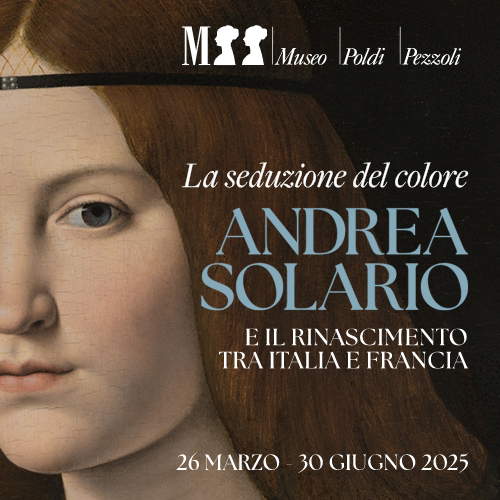The concert of concerts, Pink Floyd's 35th anniversary in Venice
Indispensable, unique, avant-garde. We all know this, Pink Floyd, a British group founded in the 1960s, has been around since before time and even before music itself. Yet, those tunes and their presence still resonate too foreign, far too far ahead to be properly understood and assimilated. And perhaps that is why audiences and critics crown them princes of the avant-garde. Pink Floyd run faster than time. For its part, time does not catch up with them, nor does it reach their sounds so foreign to the human ear, yet so much in harmony. They live in another dimension, different from that of any other band. It is an ultra-dimensional space theirs, crystallized in the ether. And they proved it by winning hands down when in 1972, led by director Adrian Maben, they presented their Pink Floyd: Live at Pompeii to the world. A memorable, intense and uplifting concert. And that is what Live at Pompeii is: a caress toward the shadows that still roam the ruins of the city buried by Vesuvius. How does one get in touch with the spectres of the past? Install state-of-the-art amplifiers and instruments inside an empty amphitheater and sing late into the night. The empty seats will serve the shadows of Pompeii; for they, of all people, possess the right to hear Pink Floyd. But who else in the history of music has succeeded in uniting the earthly and the otherworldly? Nothing to say, Pink Floyd are ahead, we repeat. So metaphysical, so eternal, so beautiful.
And perhaps that is precisely why we seem to feel Stendhal syndrome in every part of our soul when we listen to them. To speak of exclusively physical effects would be too reductive. For Umberto Galimberti, a contemporary philosopher, music as well as sculpture or painting can produce the effects described by Stendhal attributed generally in front of a painting. Indeed, is it not also an art form? In fact, Galimberti describes the syndrome made by Stendhal “characterized by tachycardia, dizziness, lightheadedness, and mental confusion that had afflicted him in the presence of works of art” tying in with the thought of philosophers who reported thehypothesis that neuroscience and mirror neurons could and do activate in the viewer the same characteristics of works of art to music “which does not exhaust its meaning in what is heard but refers back to that unspeakable to which what the music says refers.” He closes another talk with “Beauty therefore is not a quiet thing, beauty is something that surprises you.” Sense of bewilderment, bliss, restlessness and beauty are characteristics of what in 1989, Italians, Venetians and the rest of the world experienced with presence of the band in concert in St. Mark’s Basin, in the Lagoon. Pink Floyd in Venice: A Concert for Europe was a unique spectacle. And that it was dubbed “the concert of controversy,” frankly we don’t care. Today, on the35-year anniversary of the greatest live show that a band could give to the whole world, we want to remember the wonder, the musical and emotional legacy that Pink Floyd granted us and gave us. Some say, “I came. I saw. I stumbled. I came out a better man. I bowed before Pink Floyd,” while others comment with a single word “Unreachable.” There are also those who recall “I was here! Sweet memories of a beautiful week that culminated on Saturday, July 15, 1989 in St. Mark’s Square in front of the Doge’s Palace. Chaos and majesty, such a privilege. It was magnificent.”
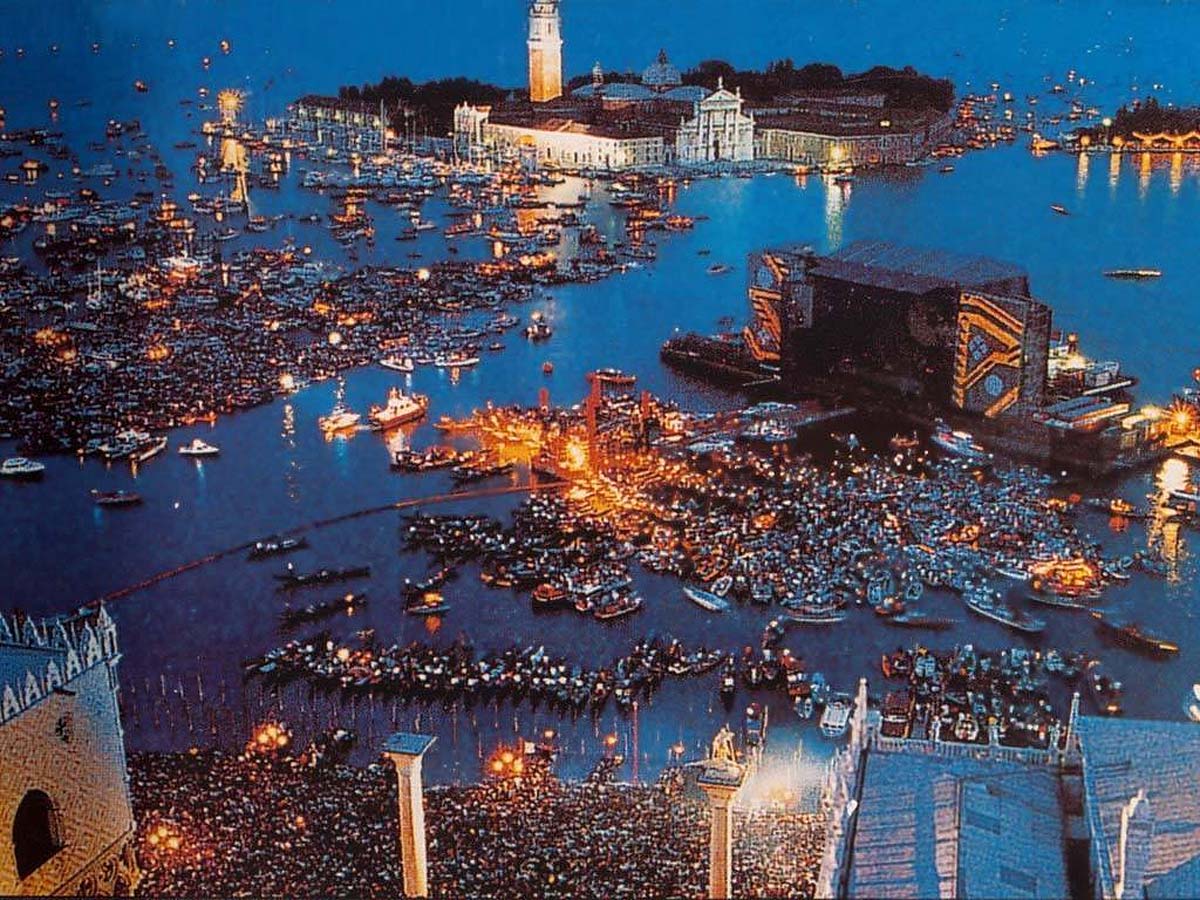
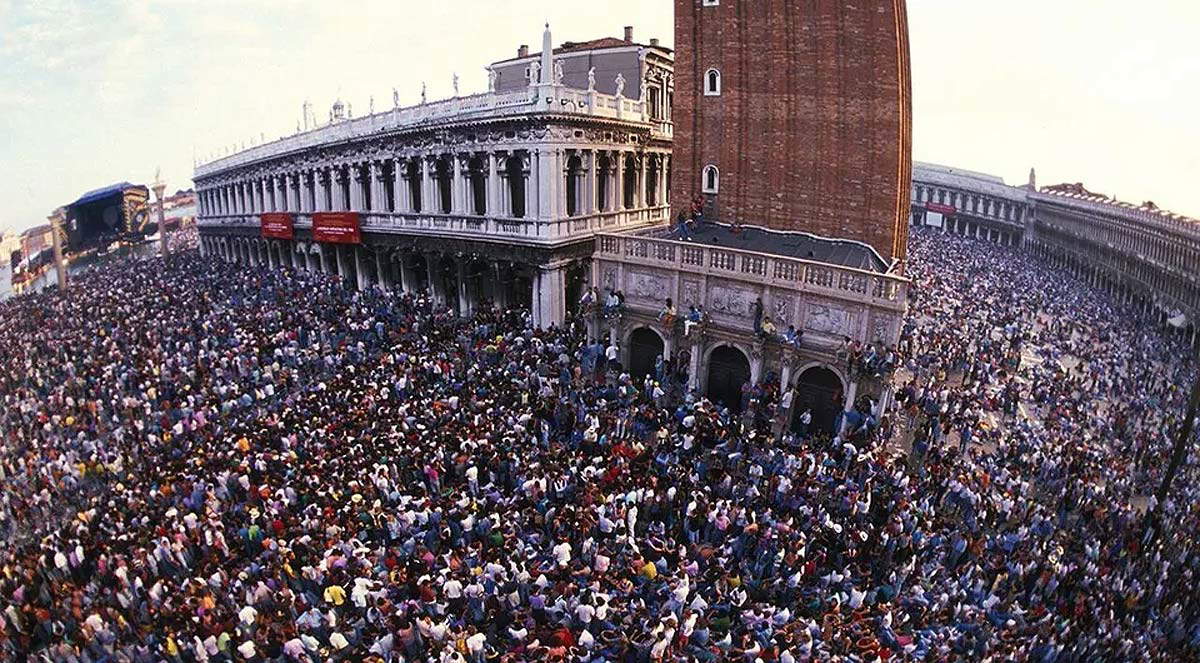

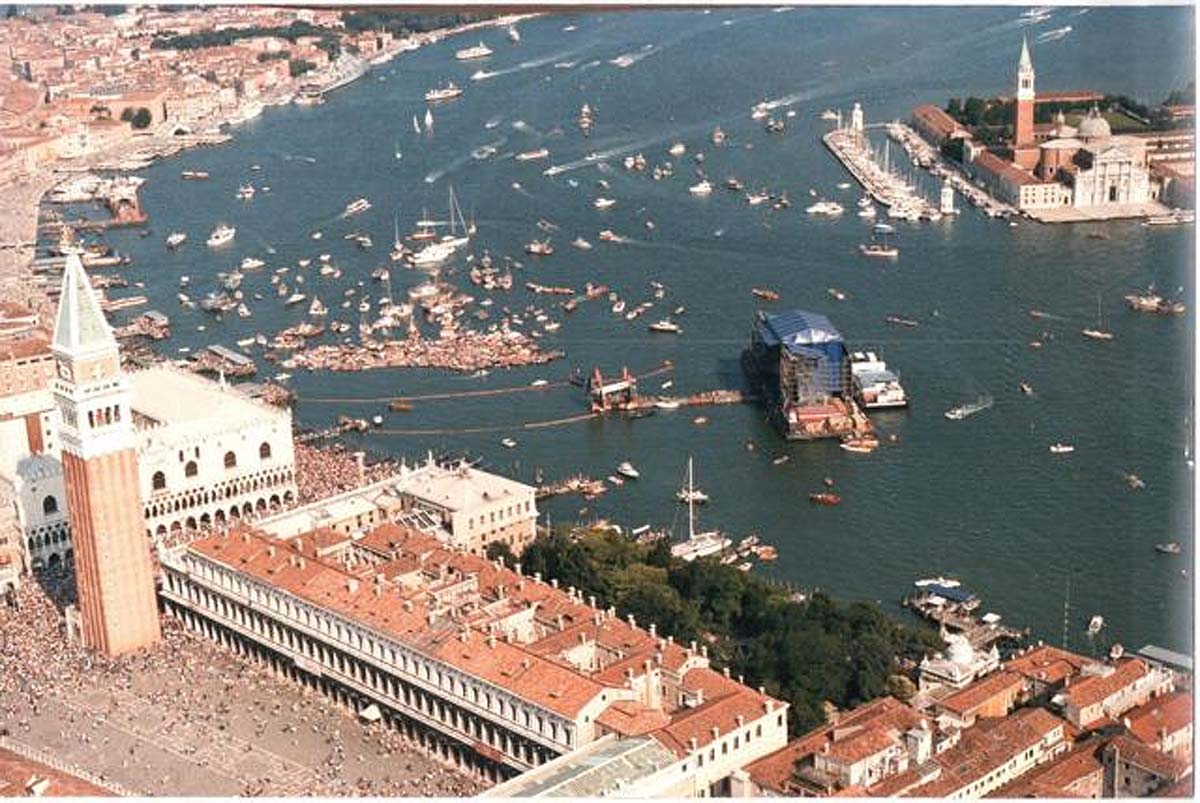
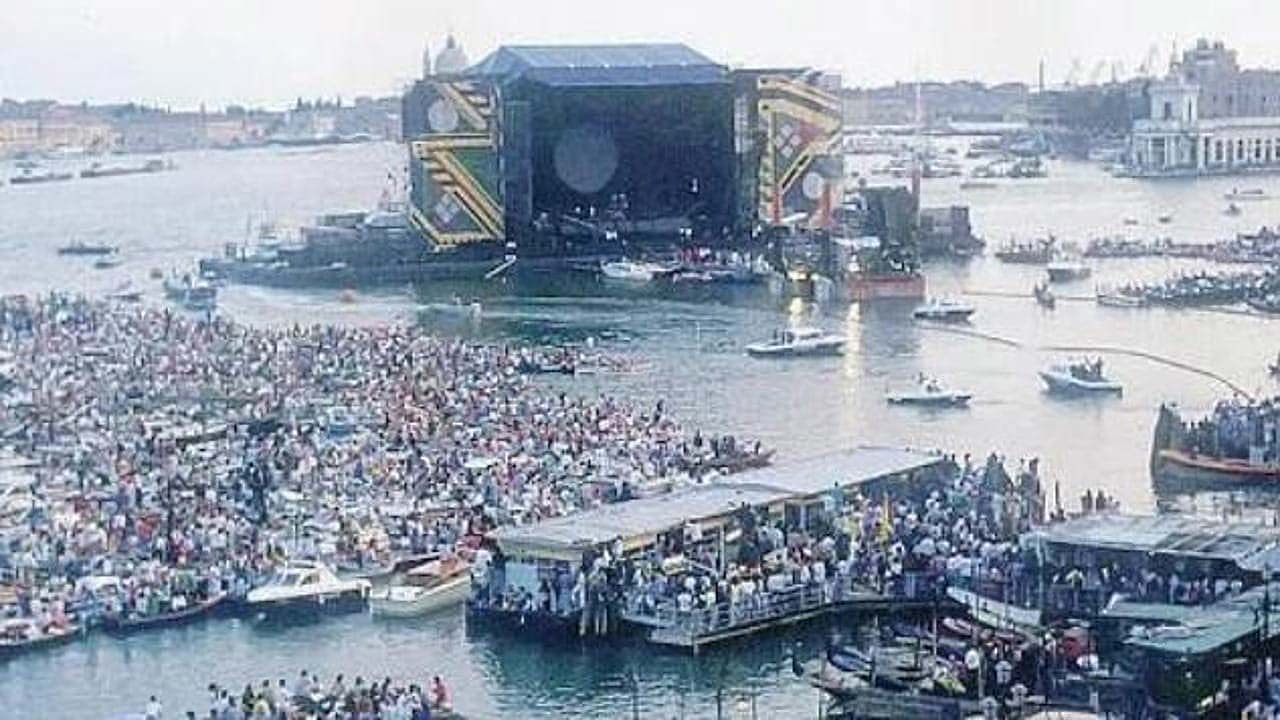
A multimedia spectacle, made of light and sound effects in quadrifonia (introduced in 1970 by the band, it is first technique of sound recording and reproduction, involves four sound streams transmitted through different acoustic speakers), Pink Floyd’s concert in Venice, produced and financed by Rai for one billion liras and broadcasted worldwide, was a free and unparalleled event. It was an epic moment unlike any other kind of performance and a far cry from the one that made them immortal in Pompeii in 1972. Organized for the Feast of the Redeemer (a memorial that still celebrates the end of the plague epidemic of 1575-1577) the live show, which was originally intended to be a dress rehearsal in view of Venice’s candidacy to host Expo 2000, ended up being elected one of the most iconic concerts in history. There are those, of course, who still call it the most controversial live instead, due to the poor organization and environmental impact that ensued, but we also know that every event possesses its dark side, as the band would define it. A floating stage in front of St. Mark’s with dimensions of 90 by 30 by 25 meters: this was the set-up conceived for Pink Floyd, which took up the idea of the eighteenth-century festivities in honor of the Redeemer, made up of orchestras placed on gondolas and on boats of different types. This was the idea they wanted to convey with the stage floating in the lagoon. In front of the band, on the other hand, more than 200,000 spectators; some on land, some on boats under the stage alongside the speakers, and another 100 million television viewers, live tuned in from all over Italy, France, America, the Soviet Union to the then still divided two Germanies. There were even those who, on the shores of St. Mark’s wearing “Live at Venice” t-shirts, climbed the roofs of the scaffolding and occupied the stations dedicated to lighting the buildings. Ah, what one does not do for Pink Floyd.
Focus of the event was also turned to the volume of their music. Due to fears that the audio would somehow damage the heritage of St. Mark’s, especially the Byzantine-era mosaics of St. Mark’s Basilica, the Superintendent of Cultural Heritage declared a limit of sixty decibels. This generated discontent among the public who called it not among the best sounding. Nevertheless, people really loved the live performance; the decibels did not really matter that much. The important thing was to be present at that moment in Venice, and to experience Pink Floyd in the city that Filippo Tommaso Marinetti, an exponent of Futurism, considered passé. “One of the biggest regrets of my life ... I was 17 years old, I was supposed to go with my brothers and friends then I withdrew at the last moment ... then watching the concert on TV, I realized I had thrown away a date with history,” someone recalls with regret. We are talking about 90 minutes of pure masterpiece, despite its reduced form compared to classic Floydian live performances. A set list of 14 songs, some cut from the most memorable and some deleted from the original set list; the opening solo of Shine On You Crazy Diamond and Time by David Gilmour accompanied by the iconic red Fender Black Strat Stratocaster. In order to meet TV times, songs including One slip, A new machine, One of these days and Welcome to the machine were removed from the show, but even that does not matter that much. Pink Floyd really can be forgiven for anything.
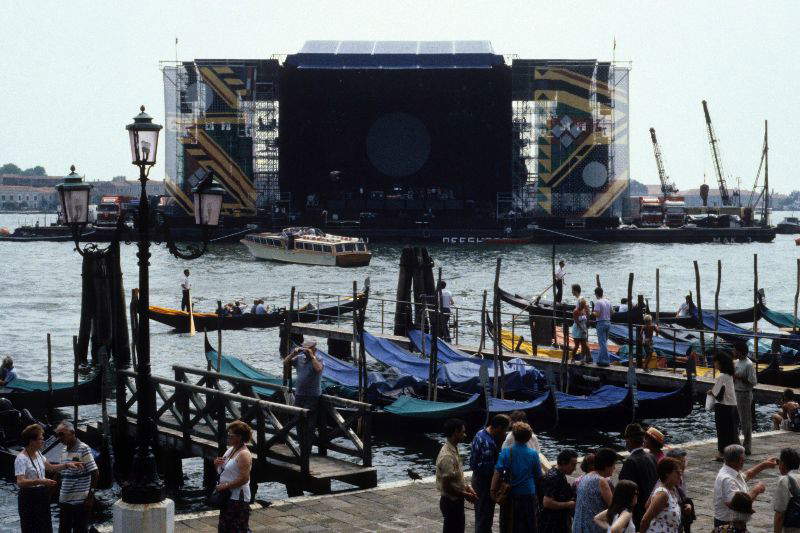


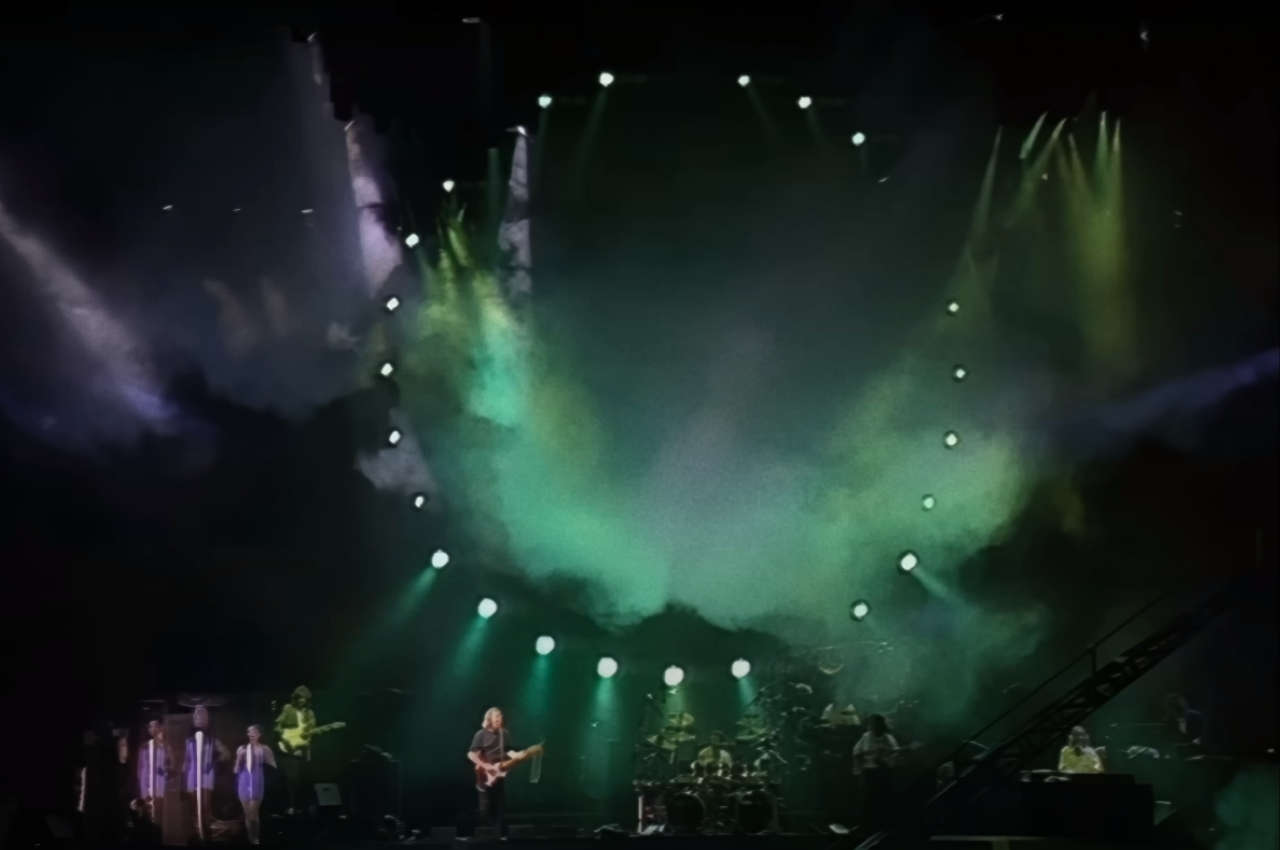

A cross-fade on Gilmour and Richard Wright introduces the beginning of the concert, then the stage is transformed into a spaceship of lights and colors through the classic geometric laser effects, sometimes started by the light circle installed behind the artists, that have always characterized their live performances. We remember them in their full power in, for example, David Gilmour’s Live at Pompeii in 2016 during the mind-blowing solo of Confortably Numb (present of course in the Venetian setlist). And here we sense the Stendhal syndrome analyzed by Galimberti. Inevitable are the wonderful Learning to fly, Yet Another Movie and The great gig in the sky famous for its intensity and the woman’s vocal improvisation on the base written by Wright. Wish you were here is instead among the most intimate, touching and emotional moments of the show; a moment of recollection in which Gilmour sings the notes of the song with his Martin D-35 acoustic giving the audience emotions that touch the chords of the soul. Not to be missed is the timeless Another brick in the wall, probably among the most famous songs of the band. A song of denunciation and protest against the school learning system that should allow individual student growth without the need to ridicule exceptionalities. The show then ended with Run like hell, with a fiery stage followed by a twinkle of lights given by the Venetian festival fireworks.
Pink Floyd held the tension of the stage and the audience sublimely, exceptionally well. Mentioning the critical aspects that emerged after the performance does not really interest us. Pink Floyd in Venice: A Concert for Europe left and still leaves without a shadow of a doubt, an indelible mark in the history of the city of Venice. An event of titanic dimensions, a fragment of history and rock music crystallized in the memories of those who, on that July 15, 1989, decided to live only by emotions and shivers down their spines. Praise then to the eternal, inescapable, avant-garde Pink Floyd.
Warning: the translation into English of the original Italian article was created using automatic tools. We undertake to review all articles, but we do not guarantee the total absence of inaccuracies in the translation due to the program. You can find the original by clicking on the ITA button. If you find any mistake,please contact us.






